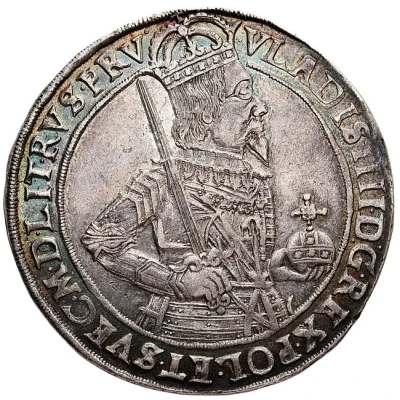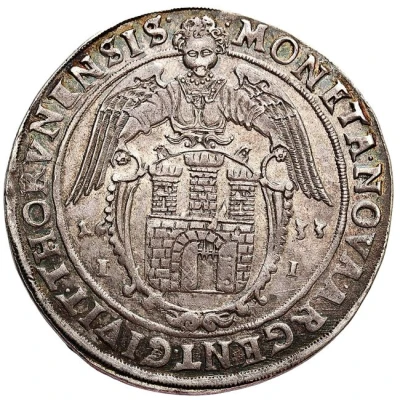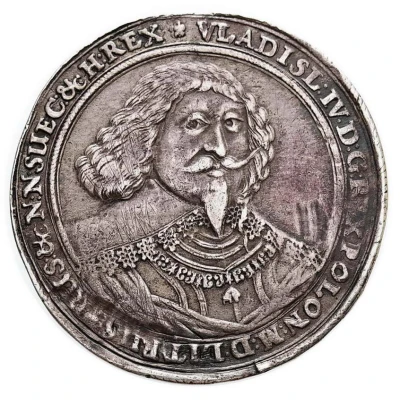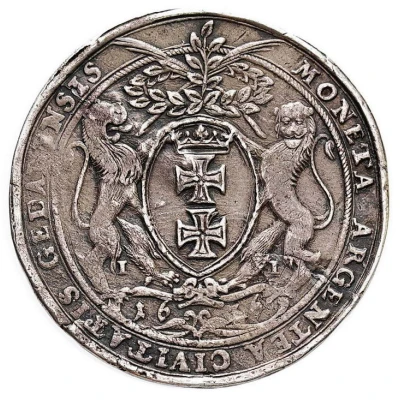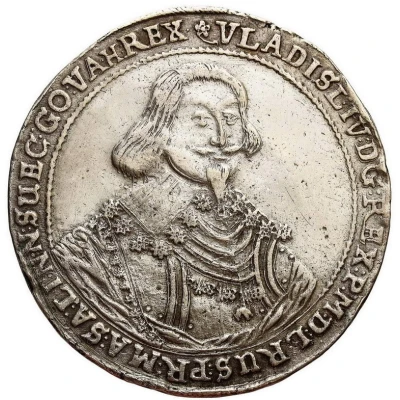
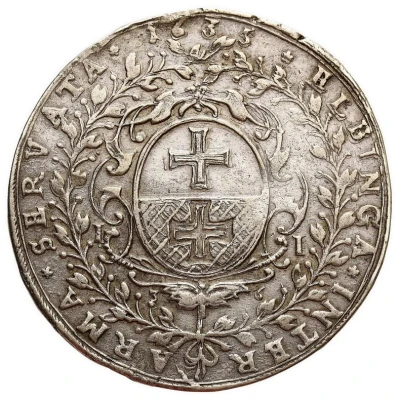

© Antykwariat Numizmatyczny - Michał Niemczyk
Talar elbląski - Władysław IV Waza Elbląg
1636 year| Silver | 28.57 g | 46 mm |
| Issuer | Polish–Lithuanian Commonwealth |
|---|---|
| King | Władysław IV Vasa (1632-1648) |
| Type | Standard circulation coin |
| Year | 1636 |
| Value | 1 Thaler (1 Talar) (8) |
| Currency | First Zloty (1573-1795) |
| Composition | Silver |
| Weight | 28.57 g |
| Diameter | 46 mm |
| Shape | Round |
| Demonetized | Yes |
| Updated | 2024-10-07 |
| Numista | N#96513 |
|---|---|
| Rarity index | 97% |
Reverse
Script: Latin
Lettering:
1635
ELBINGA INTER ARMA SERVATA
I-I
3 - 6
Comment
Mint: Elbląg - Elbinga - Elbingus - Elbing - エルブロンク - Elbings - Jelbiąg - Elbiąg - البلنغ - Эльблонг - 埃爾布隆格Punch 1:
(_) VLADISL: IV: DG: REX: P: M: D: L: RUS: PR: MA: SA: LI: N. N: SUEC: GO: VA. H: REX.
*ELBINGA * INTER (_) ARMA * SERVATA * 1635
Price: 24 000 PLN
Picture: © ANMN
Punch 2:
Obverse exactly the same as Punch 1 but different reverse
(_) VLADISL: IV: DG: REX: P: M: D: L: RUS: PR: MA: SA: LI: N. N: SUEC: GO: VA. H: REX.
*ELBINGA * INTER (_) ARMA * SERVATA * 1635
Ex.1
Price: 125 000 PLN
Picture: © ANMN
Ex.2
Price: 16 000 PLN
Picture: © ANMN
Punch 3:
Obverse exactly the same as Punch 1 but different reverse
(_) VLADISL: IV: DG: REX: P: M: D: L: RUS: PR: MA: SA: LI: N. N: SUEC: GO: VA. H: REX.
*ELBINGA __ INTER (_) ARMA __ SERVATA * 1635
Price: 30 000 PLN
Picture: © ANMN
Interesting fact
The Talar elbląski - Władysław IV Waza (Elbląg) 1636 coin was minted during the reign of King Władysław IV Waza of Poland, who was also the Grand Duke of Lithuania. The coin features an image of the king on one side and the coat of arms of the Polish-Lithuanian Commonwealth on the other. It was made of silver and weighs 28.57 grams. It's worth noting that the coin's design and weight were standardized across the Polish-Lithuanian Commonwealth, which was a significant achievement for a currency at that time. This standardization made it easier for people to use the coin across different regions and facilitated trade between cities and provinces.
